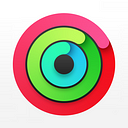UX vs CX: Shaping Customer Perceptions
Find out how UX and CX collectively shape customer perceptions and loyalty.
What Is Customer Experience (CX)?
Customer experience (CX) is a broad concept encompassing every interaction with a business, from navigating the website to talking to customer service and receiving the product/service they bought.
Each interaction shapes the customer’s perception and decision to return, hence the term customer experiences. It’s how customers engage with your company and brand in a snapshot and throughout the entire arc of being a customer.
Customer experience is an integral part of Customer Relationship Management (CRM) because a customer with a positive experience with a business is likelier to become a repeat and loyal customer.
A study by Oracle found that 74% of senior executives believe that customer experience impacts the willingness of a customer to be a loyal advocate. If the customer’s experience is positive, the likelihood and success rate of them returning increases.
Every direct or indirect interaction between the customer and the company can be considered as a part of the customer experience. The customers usually initiate direct interactions, such as purchasing or contacting customer support. Indirect interactions include reading reviews, advertising, news reports, etc.
Importance in Business
The importance of customer experience is essential. This directly influences customer loyalty, customer satisfaction, and customer lifetime value.
A positive experience can increase customer loyalty, boosting satisfaction and lifetime value. This is where the role of a CX professional becomes crucial.
A CX professional is responsible for understanding and enhancing the customer journey and ensuring that the customer’s journey through the buying process is as smooth and positive as possible.
They are tasked with mapping out each step of the customer journey and identifying key areas where improvements can be made to enhance customer satisfaction and loyalty.
CX professionals play an instrumental role in ensuring customers’ positive experiences. This not only helps in retaining customers but also in turning them into brand advocates. Therefore, understanding and optimizing the customer experience is a nice-to-have and a fundamental business requirement.
What Is User Experience (UX)?
User Experience (UX) refers to a user’s feelings and attitudes when interacting with a system, particularly in the context of digital products.
This encompasses all aspects of the user’s experience with a product, from the usability and functionality to the emotional response. A successful UX design prioritizes the user’s needs and ensures that the product is functional, efficient, pleasurable, and convenient.
When discussing UX, it’s essential to consider the user interface (UI), as it is the point of interaction between the user and the digital product. The user interface is a critical component of UX design, as it greatly influences the user’s experience.
An intuitive and well-designed UI can enhance the user experience, making the product more engaging and easier to navigate.
The goal of UX design is to create products that provide meaningful and relevant experiences to users. This involves the design of the entire process of acquiring and integrating the digital product, including aspects of branding, design, usability, and function.
UX designers focus on understanding user needs and ensuring that these needs are met in the most effective way possible.
Role in Product Development
In product development, especially for digital products, the role of a UX professional is vital. These professionals work closely with product managers and other team members to ensure that the end product meets the functional requirements and provides a positive user experience.
They are responsible for researching, designing, implementing, and evaluating the user experience.
A key and primary focus of the UX professional’s role is to advocate for the end user. This means ensuring the product is designed with the user in mind, considering their preferences, behaviors, and challenges.
Collaboration between UX professionals and product managers is crucial in creating digital products that are technically sound, user-friendly, and satisfying to the end user.
Besides, UX in product development is about creating a seamless bridge between the user and the digital product, ensuring that every aspect of the user and end-to-end process interaction is considered and optimized for a positive experience.
CX vs UX — Differences in Focus and Responsibilities
Divergent Goals of CX and UX
Customer Experience (CX) and User Experience (UX) are often mentioned in the same breath, yet they diverge significantly in focus and responsibilities. At its core, CX encompasses all customer interactions with a brand, not only with a product or service.
This broad scope includes everything from customer service interactions to the brand’s overall perception. CX professionals oversee these varied touchpoints, ensuring a cohesive and positive overall experience for the customer.
In contrast, UX is more narrowly focused at the UX level. This is concerned primarily with the user’s interaction with a specific product or service, particularly digital interfaces.
The goal is to enhance the user’s experience by making it as efficient, intuitive, and enjoyable as possible. While CX considers different interactions across various aspects of a business, UX delves deeply into the specifics of the user’s interaction with the information architecture of a single component, like a website or an app.
The distinction between CX and UX can be illustrated by considering the roles of the professionals in each field. While CX professionals look at the customer’s overall journey with the brand, UX designers and researchers focus on specific aspects of product interaction and usability for specific tasks. This difference in scope highlights the distinct but complementary nature of CX and UX.
Unique Metrics for Evaluation
The distinction between CX and UX becomes even clearer when considering the metrics used for evaluation. At the interaction level, UX metrics often focus on usability aspects like task completion rates, error rates, and time to complete tasks.
These metrics are typically gathered from a single interaction level, assessing how effectively users can navigate and use a particular digital product.
In CX, metrics extend beyond the single interaction to encompass the entire customer journey. The journey level evaluation includes customer satisfaction scores, Net Promoter Scores (NPS), and customer effort scores.
These metrics assess the ease and pleasure of the entire customer experience, from initial contact through post-purchase support.
CX takes a more holistic view of customer journeys at the relationship level, measuring long-term customer engagement and loyalty. This could include metrics such as customer retention rates, customer lifetime value, and the frequency of repeat purchases.
Such metrics give insight into the ongoing relationship between a customer and a brand, reflecting the cumulative effect of all CX efforts.
Conversely, interaction-level metrics are more focused and immediate on the UX side. They are about optimizing the individual elements of the user’s interaction with a product, like navigation flow, layout, and visual design.
These specific measures help ensure that each touchpoint in the user’s journey with a digital product is as effective and pleasant for the user as possible.
While CX and UX share common goals of improving customer satisfaction and loyalty, they operate at different scopes and with different responsibilities.
CX looks at the broad picture of the customer’s experience with a brand, whereas UX hones in on the user’s experience with a specific product or service. Both are crucial for the overall success of a business, each playing a unique role in shaping customer perceptions and interactions.
How Can UX Improve CX?
Integrating UX into CX Strategies
Integrating User Experience (UX) into Customer Experience (CX) strategies can significantly enhance customer interactions and perceptions.
A positive user experience is a cornerstone in creating positive experiences overall. This is especially true today, where digital interaction is critical in CX.
One of the key aspects of integrating UX into CX is ensuring a seamless experience across multiple devices. In our multi-device world, customers might start their journey on a smartphone, continue on a laptop, on mobile apps, and complete it on a tablet.
A consistent and seamless UX across these devices ensures that customers do not face any friction or confusion in their journey.
Besides, UX design optimizes multiple interaction channels and touchpoints within the customer journey.
Understanding the different ways and physical channels in which customers interact with a brand — whether through an app, website, or physical product — UX design helps streamline these interactions to make them more intuitive and enjoyable.
Incorporating these elements into a brand’s strategy can be complex, and this is where hiring a UX design agency becomes invaluable. A professional UX agency brings expertise in crafting user experiences that are not only visually appealing but also functionally effective.
They have the skills to analyze and understand the nuances of user behavior across different platforms and design solutions that enhance both UX and CX.
Investing in a professional UX design service helps businesses ensure that every digital touchpoint contributes positively to the overall customer experience.
Real-World Examples of UX Enhancing CX
To illustrate how UX enhances CX in real life, let’s look at some examples:
- Amazon’s Personalized Recommendations: Amazon uses UX to improve CX by offering personalized product recommendations. Based on customer feedback and previous shopping history, this feature makes the shopping experience more relevant and efficient for users. This shows understanding of the end user’s needs and preferences, increasing customer satisfaction and repeat customers.
- Apple’s Seamless Ecosystem: Apple’s ecosystem offers a seamless experience across multiple devices. Whether a user is switching from an iPhone to a MacBook or using an iPad, the experience is consistent and intuitive. This ecosystem approach addresses the user’s desire for a unified experience, enhancing the overall CX.
- Starbucks Mobile App: Starbucks’ mobile app provides a prime example of UX enhancing CX. The app allows customers to order and pay in advance, reducing wait times and creating a positive user experience. The convenience of ordering from a single device and the ability to customize orders cater to the modern customer’s need for efficiency and personalization.
- Airbnb’s User-Friendly Platform: Airbnb’s platform is designed to make hosting and booking as simple as possible. The UX focuses on straightforward navigation and clear, concise information, which creates a positive user experience and encourages repeat bookings. Customer feedback has been integral to evolving the platform, ensuring it meets guests’ and hosts’ actual experiences and expectations.
- Uber’s Intuitive App Design: Uber’s app focuses on simplicity and ease of use. From hailing a ride with a single interaction to tracking the ride’s progress and processing payment, the app’s UX is tailored to provide a smooth, hassle-free experience, significantly enhancing the overall CX.
These examples demonstrate that effective UX design, informed by customer feedback and focused on meeting user and end-user needs, can significantly enhance the overall customer experience.
Companies can create more engaging, efficient, and enjoyable customer interactions by addressing specific pain points and preferences.

